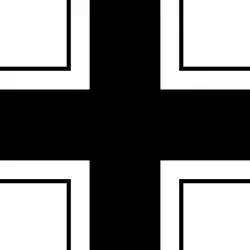
The German Luftwaffe was one of the strongest, doctrinally advanced, and battle-experienced air forces in the world when World War II started in Europe in September 1939. Officially unveiled in 1935, in violation of the Treaty of Versailles, its purpose was to support Hitler's Blitzkrieg across Europe. The aircraft that were to serve in the Luftwaffe were of a new age and far superior to that of most other nations in the 1930s. Types like the Junkers Ju 87 Stuka and Messerschmitt Bf 109 came to symbolize German aerial might.
The Luftwaffe became an essential component in the "Blitzkrieg" battle plan. Operating as a tactical close support air force, it helped the German armies to conquer the bulk of the European continent in a series of short and decisive campaigns in the first nine months of the war, experiencing its first defeat during the Battle of Britain in 1940 as it could not adapt into a strategic role, lacking heavy bombers with which to conduct a strategic bombing campaign against the British Isles.
Despite this setback the Luftwaffe remained formidable and in June 1941 embarked on Adolf Hitler's quest for an empire in eastern Europe by invading the USSR, with much initial success. However, the Luftwaffe's striking victories in the Soviet Union were brought to a halt in the Russian winter of 1942-1943. From then on, it was forced onto the strategic defensive contesting the ever increasing numbers of Soviet aircraft, whilst defending the German homeland and German occupied Europe from the growing Allied air forces pounding all aspects of German industry.
Having failed to achieve victory in the Soviet Union in 1941 or 1942, the Luftwaffe was drawn into a war of attrition which extended to North Africa and the Channel Front. The entry of the United States into the war and the resurgence of the Royal Air Force's (RAF) offensive power created the Home Front, known as Defense of the Reich operations. The Luftwaffe's strength was slowly eroded and by mid 1944 had virtually disappeared from the skies of Western Europe leaving the German Army to fight without air support. It continued to fight into the last days of the war with revolutionary new aircraft, such as the Messerschmitt Me 262, Messerschmitt Me 163 and the Heinkel He 162, even though the war was already hopelessly lost. (Full article...)